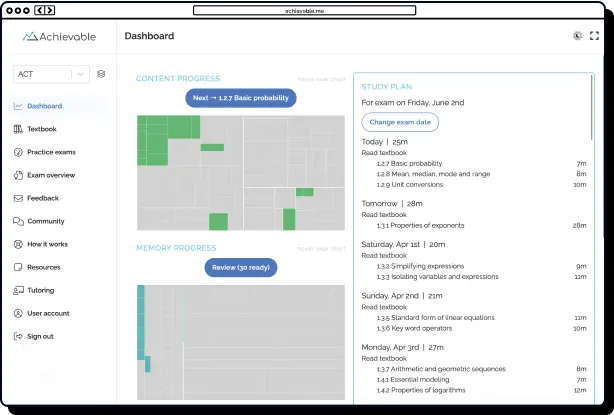
Integrate dermatology with infectious disease and immunology on the USMLE




Table of contents
- Integrate dermatology with infectious disease and immunology
- Identify key skin findings that reveal underlying immune and infectious processes
- Recognize high-yield dermatologic manifestations of immune and infectious syndromes on the USMLE
- Strengthen USMLE performance: Use systemic features to refine dermatology diagnosis
- Excel on interdisciplinary vignettes to surpass the USMLE average
- Build diagnostic certainty: Use "skin plus systemic" analysis to master advanced USMLE vignettes
This article is part 2 of 6 in our USMLE dermatology series, where we provide you with all the information you need to study for and ace dermatology-related questions and vignettes on your medical residency exams. In part 2, we explore how to use concepts from immunology and epidemiology in dermatological examination and practice.

Integrate dermatology with infectious disease and immunology
Identify key skin findings that reveal underlying immune and infectious processes
As a USMLE candidate, your goal is to rapidly recognize both the morphology and distribution of rashes and then connect these features to underlying immune responses or infectious etiologies. Being able to link specific dermatologic patterns to immunological mechanisms or pathogens transforms skin findings into high-yield diagnostic clues on the exam.
- Erythema multiforme (EM): Classic type IV hypersensitivityFor the boards, remember that EM's target-shaped lesions exemplify type IV hypersensitivity (T-cell mediated) (Merck Manual on erythema multiforme). Most cases are triggered by cytotoxic T-cell responses to keratinocytes presenting viral antigens, especially HSV-1. EM classically follows HSV-1 reactivation, with the "target" lesion being a must-know pathognomonic feature (American Family Physician clinical review).
"The classic 'iris' pattern is both a visual and immunologic clue."
- EM vs. Stevens-Johnson syndrome (SJS): Distinction mattersFor Step exams, distinguish that EM is self-limited and T-cell mediated, while SJS is a severe mucocutaneous reaction with widespread keratinocyte apoptosis, most often drug-induced (Merck Manual SJS/EM comparison).
- Infection-specific cutaneous clues
- Roseola infantum (HHV-6/7): Sudden onset high fever followed by a pink maculopapular trunk rash is classic for roseola (Roseola infantum case review).
- Pityriasis rosea: Look for a "herald patch" preceding a symmetric, scaly rash in a Christmas tree pattern, often linked to HHV-7.
- Hand, foot, and mouth disease: Painful oral ulcers plus vesicles on palms/soles point to coxsackievirus A16 or enterovirus 71.
USMLE tip: Don't just memorize appearances - always connect dermatologic presentations to the underlying immune mechanism or infectious cause for diagnostic accuracy.
Approach every skin finding as a potential sign of a specific immunologic or infectious process. Practice translating rash features directly into your diagnostic reasoning framework.
Recognize high-yield dermatologic manifestations of immune and infectious syndromes on the USMLE
On the USMLE, high scorers are able to quickly identify skin findings that indicate immune dysfunction or infection - even before laboratory tests are available.
Key diagnostic clues for your exam prep:
- Recurrent deep skin abscesses can signal primary immunodeficiencies (PID) such as chronic granulomatous disease or leukocyte adhesion deficiency. Step vignettes may feature repeated bacterial or fungal infections.
- Eczema with systemic features:
- Wiskott-Aldrich: Eczema, microthrombocytopenia (petechiae/bruising), and recurrent infections.
- Hyper-IgE (Job's): Chronic eczema, high IgE levels (>2000 IU/mL), and recurrent staph abscesses.
- IPEX syndrome: Early-onset eczema plus autoimmune diabetes and chronic diarrhea in infants - think FOXP3 mutation.
- Ocular/cutaneous telangiectasias in children should prompt you to consider ataxia-telangiectasia.
- Silvery-gray hair with partial albinism is highly suggestive of Chediak-Higashi syndrome.
Other diagnostically significant skin findings:
- Hypopigmented macules or café-au-lait spots may indicate neurocutaneous syndromes or underlying immunodeficiency.
- Chronic mucocutaneous candidiasis: Persistent oral or diaper-area candida in infants should raise suspicion for SCID (review on mucocutaneous candidiasis in SCID).
- Rosacea-like eruptions and chronic demodicosis: These may point toward STAT1 gain-of-function mutations (Frontiers in Pediatrics case discussion).
Skin infections with unusual flora: When you see infections with organisms like Serratia marcescens, Klebsiella pneumoniae, or Pseudomonas aeruginosa, always consider immunodeficiency, as these are not usual skin commensals.
Quick facts for the boards:
- In 24-48% of cases, skin findings are the first sign of primary immune deficiency
- 40-70% of PID patients have cutaneous manifestations (PubMed review)
- Remember both infectious (candida, atypical gram-negatives) and noninfectious (eczema, granulomas) skin presentations
Always analyze skin findings for their diagnostic specificity - they can directly point you to the underlying immune or infectious condition on exams.
Strengthen USMLE performance: Use systemic features to refine dermatology diagnosis
To excel on advanced USMLE dermatology questions, you must integrate skin findings with systemic features such as fever, lymphadenopathy, or myalgias. Top scorers use these systemic clues to distinguish between diseases that may have similar rashes.
Approach:
- Drug-induced hypersensitivity: A painful eruption with mucosal involvement, high fever, and recent anticonvulsant use (e.g., lamotrigine) should make you think of SJS - not just a simple viral exanthem. Fever is a high-yield clue for systemic immune activation (USMLE Step 2 CK dermatology review).
- Lymphadenopathy as a clue: Cervical lymphadenopathy, fever, and violaceous facial plaques (especially in young women) suggest Kikuchi-Fujimoto disease (Actas Dermo-Sifiliográficas review).
- Epidemiological context: Consider clusters of symptoms and demographic factors, age, exposures, risk factors, when you see lymphadenopathy accompanied by rash (AAFP guide).
- Context-dependent red flags: For example, a farmer with regional lymphadenopathy, fever, and cutaneous ulcers after animal exposure should make you think of tularemia (JAMA Dermatology report).
Tips for sharper differentials:
- Sequence clinical events: Did fever precede the rash? When did lymphadenopathy appear?
- Map lymph node locations: Are they regional or generalized?
- Always assess exposures and demographic context
AMBOSS's interdisciplinary dermatology principles recommend reviewing all organ systems - bring in knowledge from rheumatology, infectious disease, and endocrinology to avoid diagnostic errors, such as confusing pemphigus vulgaris (fever, mucosal blisters) with bullous pemphigoid (usually no fever).
"Systemic features and clinical context are key to precise diagnostic reasoning."

Excel on interdisciplinary vignettes to surpass the USMLE average
Your ability to synthesize dermatology, infectious disease, and immunology in USMLE vignettes comes from consistent interdisciplinary practice, not just passive reading.
Interactive case modules requiring you to connect multiple systems enhance diagnostic accuracy. This advantage extended even to unrelated topics, showing interdisciplinary training improves diagnostic flexibility (PMC study).
USMLE exams are designed to assess integrative reasoning. For instance, to diagnose bullous pemphigoid, you must connect IgG-mediated basement membrane disruption to tense subepidermal blisters; dermatitis herpetiformis links gluten sensitivity, granular IgA deposition, and characteristic skin changes (USMLE Step 2 CK dermatology review).
Resources like USMLE Step 2 CK Rapid Review encourage cross-disciplinary thinking. Integrated learning in medical education builds the 'clinical switch' required for top exam performance and excellent patient care (article on integrating immunology in medical education).
For optimal results when studying:
- Complete 15-20 timed interdisciplinary clinical vignettes per week.
- Prioritize high-yield intersections:
- Immunologic mechanisms (e.g., type II hypersensitivity in pemphigus vulgaris)
- Dermatologic findings (e.g., flaccid bullae, Nikolsky sign)
- Infectious presentations (e.g., cellulitis, requiring Streptococcus and Staphylococcus coverage)
- After each case, actively map connections among dermatology, infectious disease, and immunology.
This deliberate practice builds the multifaceted reasoning that leads to superior USMLE scores and clinical expertise.
Build diagnostic certainty: Use "skin plus systemic" analysis to master advanced USMLE vignettes
Mastering complex USMLE dermatology scenarios requires you to systematically combine specific skin findings with systemic features for a precise diagnosis.
High performers consistently use a 'skin findings plus systemic symptoms equals specific immune or infectious process' framework:
- Synthesize, don't just list. For example, a teen with malar rash and joint pain should trigger SLE in your differential - pediatric SLE can often present with skin involvement before organ symptoms.
- Differentiate fever-rash combinations using objective criteria. Fever plus rash spans many diseases; applying an algorithm that considers fever height, GI symptoms, or mental status helps distinguish benign from life-threatening causes like meningococcemia.
- Recognize diagnostic constellations. Kawasaki syndrome is identified by a set of findings - conjunctivitis, oropharyngeal erythema, extremity changes, and inflammation. Missing a feature can lead to a missed diagnosis, so always think about the complete clinical picture.
- Leverage pattern recognition. For example, heliotrope rash plus proximal muscle weakness is characteristic of dermatomyositis - know these classic associations for the exam.
Make it a habit to check for relevant extracutaneous findings, fever, joint pain, neurologic changes, in every dermatology vignette, and link them to immune or infectious etiologies. This systematic approach is essential for achieving strong USMLE scores and for your future clinical practice.
Click here for part 3, "Leverage epidemiologic data to outsmart exam distractors." Read on for expert advice on using statistical reasoning to complete your diagnoses and prevent common pitfalls on the exam.

